
Hero Images/Hero Images/GettyImages
If you're having your ears pierced for the first time, it's tempting to envision the types of earrings you'd want to wear. However, it's not as simple as piercing your ears, and then skipping straight to your favorite pair of earrings. The process after having your ears pierced is crucial to adequate healing and for avoiding infection.
Wait Six Weeks
When you first pierce your ears, you'll be given starter studs. These can sometimes be difficult to remove if the ear hasn't been cared for properly or you just don't know how.
"Ensure you have waited the correct amount of time before removing starter earrings (usually six weeks) as new skin needs to have formed around the hole," says Johannesburg-based dermatologist Catherine Davies, M.D.
Read more: List of Body Parts That Can Be Pierced
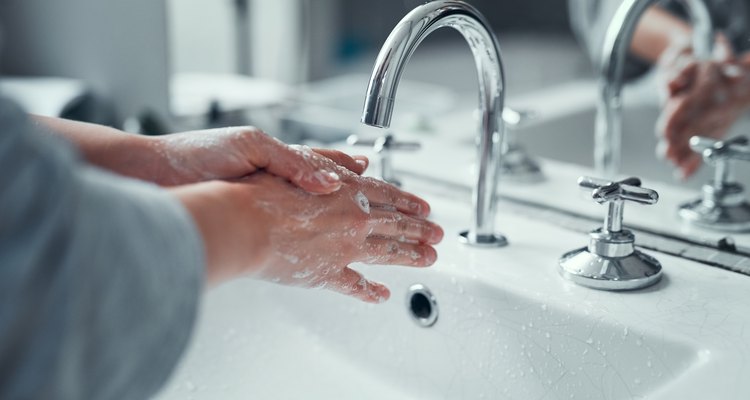
PeopleImages/iStock/GettyImages
Wash Your Hands
Once your piercings are fully healed and you're ready to chance out the earrings, the first critical step to avoiding infection is to wash your hands. Your hands are full of germs even if you can't see them. Cleaning them with antibacterial soap is important before you tackle removing your starter studs, says Dr. Davies.
Clean Your Ear Lobes
After your hands are clean, make sure your earlobes are clean, too. "Soak a cotton swab in rubbing alcohol or hydrogen peroxide (3 percent)," says Dr. Davies, "and wipe down your ear lobe thoroughly with the swab."
Move Stud Around
To make sure you've cleaned in all the hard-to-reach places, move the stud around in a clockwise motion to ensure all areas are cleaned, Dr. Davies says.
Remove Started Stud
Once you've cleaned your ear lobe, you can now remove the starter stud. "Hold the stud tight and still and pull the butterfly out at the back," says Dr. Davies. "Do not attempt to pull the two parts away from each other, or stretch your earlobe down," she says, as this could cause injury.
Replace Earrings
Once the starter studs are out, you're ready to replace with your preferred style of earring. Make sure that the earring you choose is hypoallergenic.
nicoletaionescu/iStock/GettyImages
How to Prevent Piercings from Becoming Infected
Making sure that you always use hypoallergenic earrings will help in keeping infections at bay, says Dr. Davies. Davies also stresses the importance of washing your hands before touching your earrings and cleaning daily during the first six weeks.
Also, do not use towels to dry your ear lobe after you've cleaned them, as you're opening yourself up to increased risk of infection. "Bath towels are a huge no-no," says body piercing specialist, Conrad Feldman. "They carry a lot of bacteria and microbials." Instead, stick to a cotton swab or use a clean tissue or paper towel.
How to Tell If a Piercing Is Infected
According to Feldman, it's normal for a correctly fitted piercing to produce a "white to off-white discharge," as it begins to heal. So while it might be a bit concerning, it's perfectly normal.
What's not normal? "If the discharge changes from off-white to a yellowish or green tinge, it means your piercing is not doing very well, he says. Other signs your piercing may be infected is if you notice that the piercing site smells bad or the skin around it becomes red, swollen, painful or hot, says Dr. Davies.
What to Do If a Piercing Is Infected
"Do not remove the jewelry, " says Dr. Davies. Feldman concurs, explaining that the jewelry should be left in to act as a drain for the infection. Instead, Davies says that if your piercing starts to show signs of a possible infection, you should clean the area three times daily with saline (salt water).
"If symptoms worsen then seek help from a medical doctor or nurse," she says. A doctor will usually prescribe topical and/or oral antibiotics to treat the infection.
Related Articles

How to Change Pierced Earrings

How to Sanitize Earrings
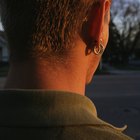
How to Gauge the Ears Right After the ...

How Long Should I Wait to Get My Nose ...
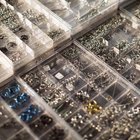
Complications of Nipple Piercing

How to Drain a Cheek Piercing
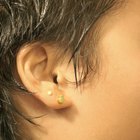
How to Take off a Stud Earring
How Long Should I Wait to Change My ...
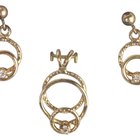
How Long After Piercing Can You Change ...
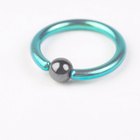
How to Clean Your New (Conch) Ear ...

What to Do When a Nose Ring Falls Out

How to Open Pierced Ears That Have ...

How Long Do You Keep Your Earrings in ...

Nipple-Piercing Risks

Care for Pierced Ears with Isopropyl ...

How to Clean a Cartilage Piercing

How to Soothe an Irritated Piercing

How to Pierce Your Navel

How Long to Wait Before You Change a ...

How to Change a Labret
Writer Bio
Sholeen Lagadien is a freelance writer and editor, mom and Bikram Yoga enthusiast.